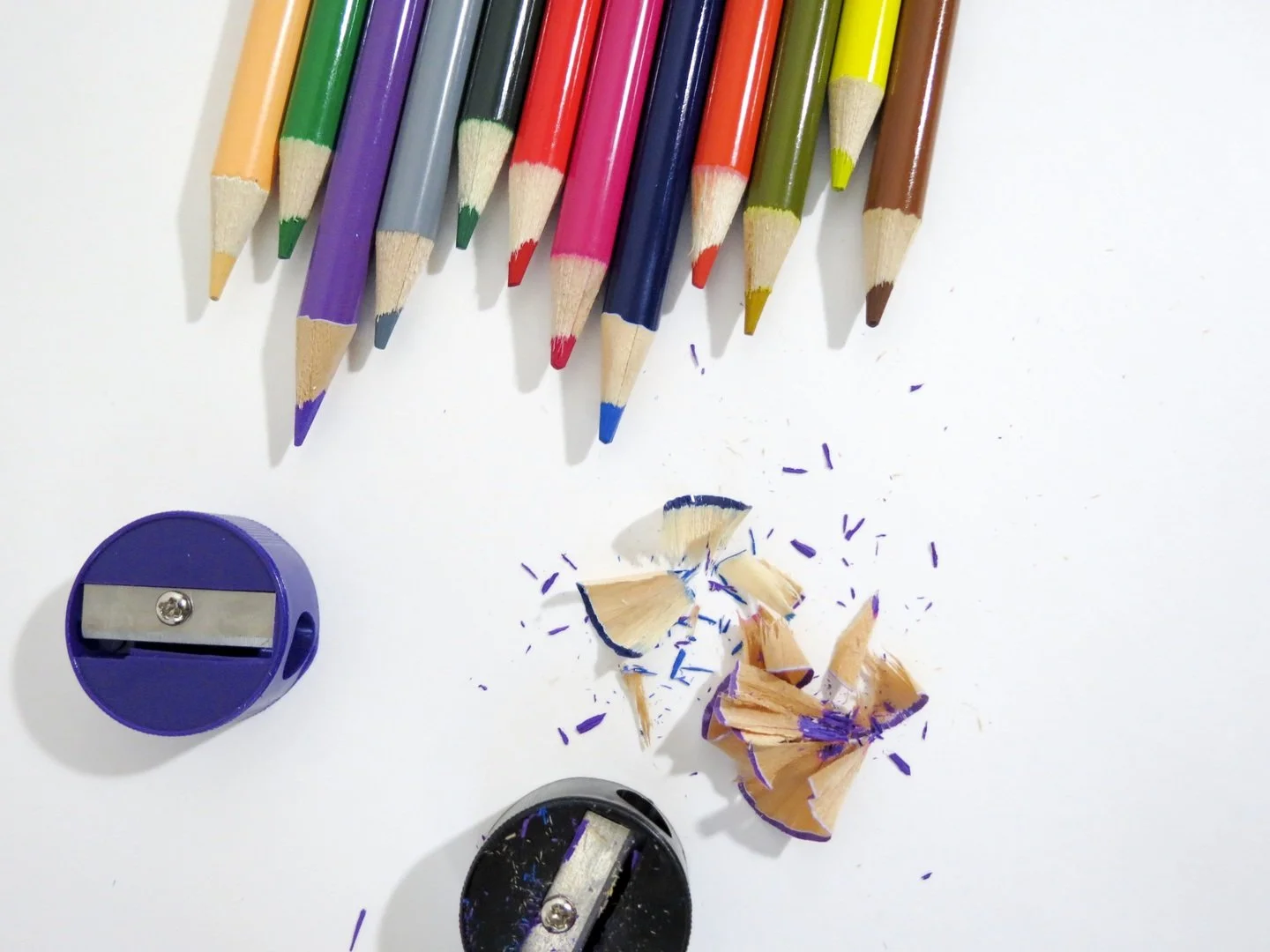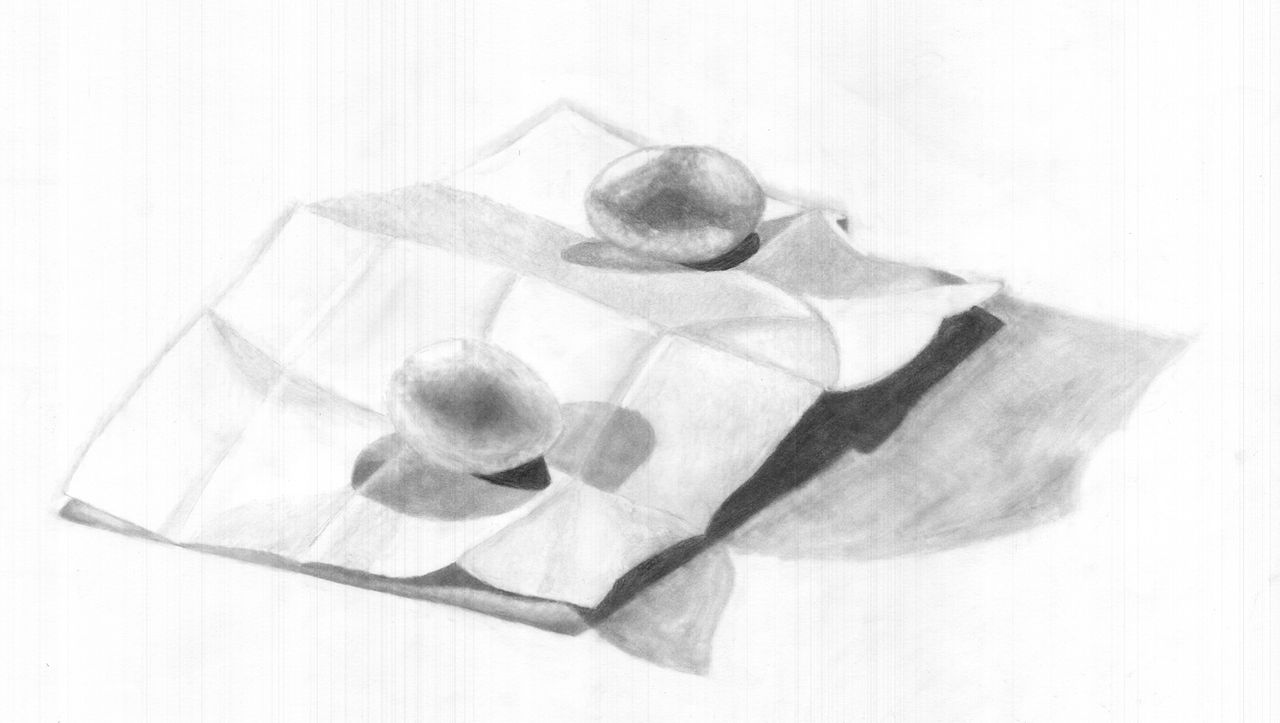Credit: Halasaar01 on DeviantArt
The interplay of light and shadow is a fundamental element in art that transcends medium and style, holding a particularly pivotal role in pencil drawing. This dynamic duo does more than merely define the form; it breathes life into the flat canvas, inviting viewers to step into a world crafted from graphite and paper. In pencil art, mastering the manipulation of light and shadow is akin to learning the language of visual storytelling. It allows artists to sculpt depth, texture, and atmosphere with nothing but shades of grey.
This article aims to dive deep into the techniques and philosophies behind effectively using light and shadow in pencil drawings. Whether you’re a beginner artist looking to understand the basics or an experienced illustrator seeking to refine your technique, the insights shared here will guide you in adding dimension, volume, and a sense of realism to your artwork. By observing and translating light sources with precision, you’ll learn to elevate your pencil art from simple sketches to complex, captivating pieces that engage and inspire.
Internet Archive Book Images
Understanding Light and Shadow
Basics of Light and Shadow
At its core, the concept of light and shadow is about how light behaves in an environment and how we perceive it. Light, the invisible artist’s brush, dances across surfaces, creating patterns of light and dark that inform our eyes about shape, texture, and distance. The direction, intensity, and color of the light source significantly impact the appearance of the subject. For instance, a light source directly above an object creates a different effect than one from the side or below, altering our perception of the object’s dimensions and position in space.
In pencil drawing, understanding these principles is crucial for translating a three-dimensional world onto a two-dimensional plane. By manipulating the contrast between light and dark, artists can suggest volume and depth, making a flat image appear almost tangible.
Types of Shadows and Their Effects
Shadows in art are not a monolith; they vary in depth, edge, and intensity, each type adding a layer of realism and complexity to the drawing. Here’s a breakdown of the main types:
Core Shadows: The darkest part of the shadow, appearing on the side opposite the light source. It defines the form of the object.
Cast Shadows: Shadows thrown by the object onto surrounding surfaces, helping to anchor it in its environment.
Form Shadows: Subtle shadows that define the shape of the object, usually softer and lighter than core shadows.
Reflected Light: Light bouncing back into the shadow areas from surrounding surfaces, adding complexity to shadows and enhancing the sense of volume.
Understanding and accurately depicting these shadow types can dramatically improve the realism of pencil drawings. Each shadow type plays a role in conveying the texture of the surface, the distance between objects, and the ambient atmosphere of the scene.
Tools and Materials for Pencil Art
Navigating the world of pencil art, the choice of tools and materials significantly influences the final outcome of your work. This journey into the realm of graphite and paper is not just about technique but also about the tools that bring your vision to life. Understanding the nuances of pencils, paper, and the additional tools at your disposal will empower you to master the delicate balance of light and shadow in your drawings.
Choosing the Right Pencils
The pencil is the artist’s primary instrument, and selecting the right grade can feel as personal as choosing a wand in the wizarding world of art. Pencils are graded on a scale that measures the hardness of the graphite core. On one end of the spectrum are the ‘H’ pencils, hard and offering lighter marks, perfect for delicate shading and precise lines. As we move towards the ‘B’ pencils, the graphite becomes softer, allowing for darker, richer strokes, ideal for creating deep shadows and bold contrasts.
For those beginning their journey in pencil art, a basic range from 2H to 6B will cover most needs, allowing for a wide array of tones from light to dark. Brands like Faber-Castell and Derwent are renowned for their quality, offering consistency in application and a smoothness that can make a difference in your work. Professionals might delve deeper, exploring the extremes of the spectrum for specialized effects, but these brands offer reliability and excellence for artists at any level.
Paper Types and Textures
The canvas for pencil artists, paper, plays a pivotal role in the final appearance of your artwork. The texture of the paper interacts with the graphite to create unique effects, influencing how light and shadow play across the surface. Smooth papers are best suited for detailed work, where precision and subtlety are key. The fine texture allows for crisp lines and smooth gradients, making it ideal for realistic portraits and intricate designs.
Conversely, papers with more texture, often referred to as ‘tooth,’ lend themselves well to expressive work, where the texture adds depth and character to the shadows. The choice of paper texture is a dance with light and shadow, where the artist must decide how the medium will best convey the intended mood and style of the piece.
For most projects, a medium-textured paper strikes a harmonious balance, versatile enough to accommodate detailed work while providing enough tooth for effective shading. Strathmore and Canson offer ranges that are highly recommended for their quality and consistency, catering to various artistic needs.
Additional Tools
To truly master the interplay of light and shadow, a few additional tools should be part of your arsenal. Blending tools like tortillons or blending stumps become extensions of your fingers, smoothing out graphite to create gradients that mimic the soft transitions of light. Kneaded erasers offer precision in lifting graphite, allowing you to refine highlights and correct oversights gently.
A good sharpener is crucial, ensuring your pencils are always at the perfect point for the task at hand, whether it’s fine detailing or filling in larger areas. These tools, while simple, are indispensable in achieving the precise control over light and shadow that elevates your pencil art from good to exceptional.
In the end, the mastery of pencil art lies not just in skill and technique but in understanding and utilizing the right tools and materials. The interplay of pencil grades, paper textures, and additional tools provides the foundation upon which the magic of light and shadow is built, transforming simple sketches into captivating works of art.
Credit: izzy-the-hedgehog on DeviantArt
Techniques for Creating Contrast
Mastering the art of pencil drawing demands a keen understanding of light and shadow. This intricate dance between the two can transform a flat image into a lifelike scene that jumps off the page. Achieving this level of realism requires not only talent but a deep understanding of your light sources, a meticulous approach to translating these observations onto paper, and the skill to use gradients and contrasts effectively. Let’s delve into these techniques to elevate your artistry.
Observing Light Sources
The foundation of creating compelling contrast in your artwork begins with a keen observation of light sources. Real-world lighting conditions are complex, influenced by the direction, intensity, and color of light. Start by noticing how light behaves in different environments—how it casts shadows, creates highlights, and affects colors. Observing these nuances is critical for understanding how to replicate them in your drawings.
Exercises to Improve Observation Skills:
Study Light Indoors and Outdoors: Spend time in various lighting conditions. Notice how the quality of light changes from dawn to dusk and how artificial light interacts with objects differently than natural light.
Create a Light and Shadow Journal: Sketch quick studies focused solely on light and shadow. This practice develops your ability to capture the essence of light quickly.
Use Objects to Study Shadows: Place an object under a lamp and observe how moving the light source changes the shadow’s length, sharpness, and direction. This exercise helps you understand shadow behavior, crucial for realistic drawing.
Translating Observations to Art
Once you’ve honed your observation skills, the next challenge is translating these real-world lighting conditions into your artwork. This process requires a delicate balance of technical skill and artistic interpretation.
Step-by-Step Guide on Sketching Out Light and Shadow:
Begin with a Light Sketch: Start with a very light outline of your subject, focusing on its basic shapes. This initial sketch serves as a roadmap for your drawing.
Identify the Light Source: Determine the direction and intensity of the light source. This will guide you in placing the highlights and shadows.
Mark the Highlights and Core Shadows: Lightly indicate where the brightest highlights and the darkest shadows (core shadows) will be. These marks will serve as anchors for developing the rest of your drawing.
Gradually Build Up Tones: Using a range of pencils, start filling in the tones, working from light to dark. Pay attention to the value transitions between the light and shadow areas to create depth.
Deciding on the Darkest and Lightest Areas:
Use your observations to guide where the light naturally hits your subject and where the shadows are cast. Highlights are typically found on surfaces facing directly towards the light source, while the core shadows appear on the opposite side.
Consider reflected light and how it might lighten shadows, adding complexity to your drawings.
Creating Volume and Depth
Creating the illusion of volume and depth on a flat piece of paper is one of the most satisfying aspects of drawing. This illusion is achieved through the strategic use of gradients and contrast.
Techniques for Using Gradients and Contrast:
Understand Form: To suggest volume, you must first understand the form of what you’re drawing. Whether it’s a sphere, cube, or cylinder, knowing its shape helps in applying the correct gradient.
Apply Gradients: Gradients are gradual changes in tone that suggest curvature and roundness. Apply them by gently layering pencil strokes, moving from light to dark where the form recedes from the light source.
Adjust Contrast: Increase contrast around the edges of the form and where the object casts a shadow. High contrast areas attract the eye and can be used to emphasize the most important parts of your drawing.
Avoiding Common Mistakes That Flatten Images:
Overuse of Mid-Tones: Relying too heavily on mid-tones can make your drawing appear flat and dull. Ensure there’s a wide range of tones from light to dark in your drawing.
Ignoring the Light Source: Consistency with your light source is key. Inconsistent lighting across different parts of your drawing can disrupt the sense of volume.
Neglecting Shadow Edges: Pay attention to the edges of shadows. Soft edges suggest a diffuse light source, while hard edges indicate a direct light source. Matching the shadow’s edge to the light source adds realism to your drawing.
By meticulously observing light sources, translating these observations with skill and care, and mastering the use of gradients and contrast, you can create pencil drawings that truly resonate with viewers. These techniques bridge the gap between simple sketches and compelling, lifelike art, inviting viewers to explore the depth and volume of your creations.
Creator: Ruth Lathlean
Practical Tips and Tricks
Achieving realism in pencil art is an art form that requires not just skill but also a deep understanding of light, shadow, and form. Here are some practical tips and tricks that can help enhance the realism of your drawings and encourage personal style development.
Enhancing Realism through Detailing
Detailing is where your drawing begins to come alive, transforming from a series of shapes and shadows into a lifelike image. Paying close attention to the nuances of light and shadow can elevate your artwork significantly.
Fine-Tune Shadows and Highlights: The devil is in the details. Adjusting the depth of your shadows and the brightness of your highlights can add a layer of realism to your work that flat, uniform shading cannot. Observe closely how light falls on different surfaces and mimic these subtleties in your drawing.
Use Reference Images Effectively: Reference images are invaluable for understanding complex lighting conditions and how they affect various forms. Study these images to notice the small details that make a scene realistic, such as the subtle gradients within shadows or the way light reflects off different textures. However, avoid becoming overly dependent on these references; use them as a guide, not a crutch.
Experimentation and Style Development
Developing a unique artistic style is a journey that involves experimentation and continuous practice. Light and shadow play a crucial role in defining this style, as they can dramatically alter the mood and feel of your work.
Encourage Experimentation: Don’t be afraid to experiment with different lighting conditions, contrasts, and textures. Try drawing the same object under various light sources to see how it changes. This exploration can lead to unique discoveries about how you prefer to depict light and shadow.
Keep a Sketchbook: A sketchbook is not just a place to practice but a record of your progress and experiments. Use it to explore new ideas, jot down observations about light and shadow, and track the development of your style over time. Reviewing your sketchbook can offer insights into what techniques work best for you and how your approach to drawing has evolved.
By focusing on the fine details and embracing experimentation, you can enhance the realism of your pencil drawings and carve out your unique artistic identity. Remember, mastery comes with practice and patience, so keep sketching, observing, and refining your technique.
Creator: Internet Archive Book Images
Conclusion
Mastering the interplay of light and shadow is the cornerstone of creating compelling, realistic pencil drawings. This intricate dance between darkness and light is what breathes life into your artwork, transforming flat sketches into dynamic, three-dimensional visual experiences. Understanding how to manipulate these elements can elevate your art, allowing you to convey not just images, but emotions and atmospheres that resonate with viewers.
Let this exploration of light and shadow serve as a foundation upon which to build and expand your artistic skills. Regular practice is key to refining your technique, enhancing your observational skills, and developing a deeper understanding of how light interacts with form. Each drawing you create is an opportunity to experiment, to learn something new, and to inch closer to the artist you aspire to be.
Remember, the journey of artistic growth is endless and filled with endless possibilities. Embrace the challenges and frustrations that come with learning, for they are signposts of progress. Allow yourself the freedom to explore, to make mistakes, and to discover your unique voice as an artist. With patience, persistence, and a passion for exploration, the mastery of light and shadow will not only improve your pencil drawings but also open new avenues for creative expression.
As you continue on your artistic journey, let curiosity be your guide and practice be your companion. The world of light and shadow is vast and nuanced, waiting for you to capture its beauty through the tip of your pencil.











0 Comments